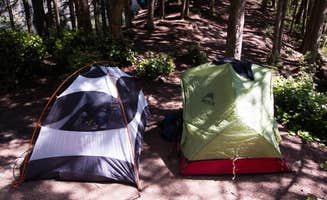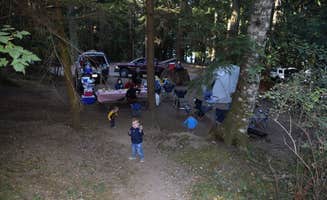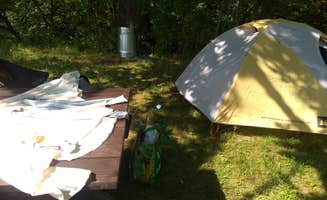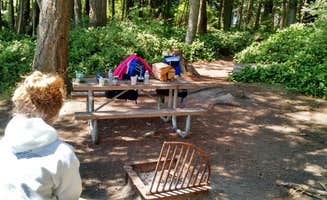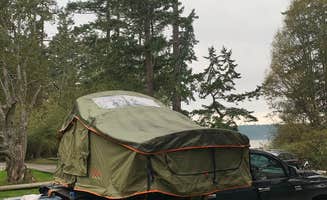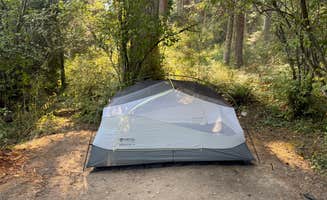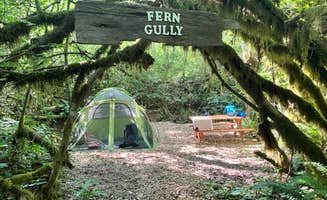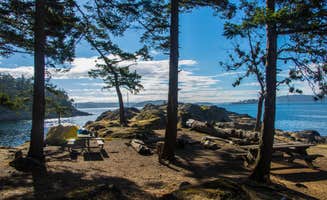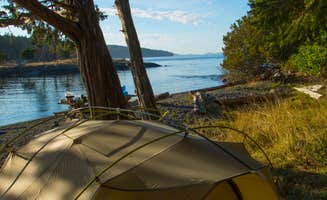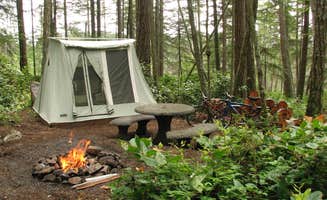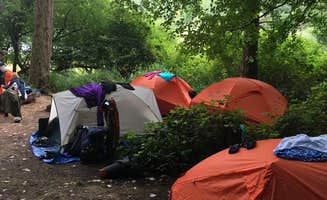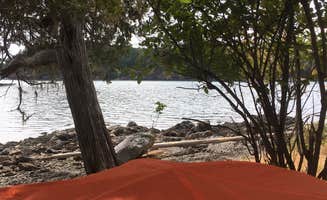Tent camping near Ferndale, Washington provides access to island camping experiences not found in many other regions. The San Juan Islands, accessible from nearby ferry terminals, feature primitive campsites on several marine state parks with unique ecosystems. Overnight temperatures can drop into the 40s even in summer months, requiring campers to pack layers and appropriate sleeping gear for maritime climate conditions.
What to do
Hike to mountain viewpoints: At Moran State Park on Orcas Island, trails lead to spectacular vistas. "If you follow the road up to Mt. Constitution, there is a lookout tower that resembles a castle. From here you get one of the most spectacular views of the San Juan Islands," shares Rich M. The park offers multiple hiking options of varying difficulty levels.
Paddle and explore: Patos Island State Park provides water-based adventure opportunities. "We camped right out in the open and watched the barges go past in the night. The stars and the sunsets were incredible. The view from the lighthouse is pretty incredible," notes Kaila R. Kayakers can navigate between islands with proper planning and tide knowledge.
Wildlife viewing: Island camping provides chances to spot marine mammals and birds. At Sucia Island Marine State Park, visitors report diverse wildlife encounters. "Despite being relatively small Sucia Island is the biggest of the three outer San Juan Islands and provides many different options for visitors," explains Kelsey M. The island's horseshoe shape creates protected coves that attract various species.
What campers like
Private island experiences: Sucia Island Marine State Park offers seclusion rarely found in popular camping areas. "This is one of the northern most islands in the San Juan's so don't be surprised if the US Coast Guard is lingering about. These sites are remote, so don't expect many visitors and be sure to soak up the incredible views," says Sarah C. The island requires boat access, limiting visitor numbers.
Beach proximity: Many island campsites sit just above shorelines. "We kayaker from Orcas to Sucia and spent the night at the Shallow Bay campsite on the southern beach. It was cute, tucked away in the trees. Incredible view of the water and the sunset, and secluded unlike the other bays which are favorites for the cruising crowd," reports Niki A.
Old-growth forests: Several camping areas feature preserved stands of mature trees. On Matia Island, Kelsey M. notes: "The island itself is a wildlife refuge and not owned by the state parks so it is almost entirely untouched. There's a single mile-long hiking trail through an old growth forest that, unlike other islands, wasn't destroyed by the settler loggers."
What you should know
Transport planning: Most island camping requires boat transportation. For Obstruction Pass State Park, "The campsite is walk-to, about a 1/2 mile, making it a backpacking kind of overnight for kids or friends who don't want to be too far from a car and civilization," explains Kim B. Ferry schedules should be checked well in advance during peak season.
Limited facilities: Most primitive camping areas have minimal amenities. At Patos Island Marine State Park, expect basic facilities as noted by Sarah C.: "Like all of the marine state parks in Washington, this site is well maintained. You will find clearings for pitching your shelter, a picnic table and relatively clean vault/pit toilets."
Weather considerations: San Juan Islands camping requires preparation for variable conditions. "I recently did a solo kayak trip around Orcas Island, WA and Clark was my first stop. Despite its location, Clark can be noisy as it is right on a major shipping channel and a nearby major railway hosts oil and coal trails 24/7," reports Jill R., highlighting that weather isn't the only environmental factor to consider.
Tips for camping with families
Choose accessible options: Clark Island Marine State Park offers relatively easy access for families with children. "Great, well-spaced site. Newer bath facilities, great swimming and large beach," notes George. The sites provide enough space for multiple tents if bringing extended family.
Pack for variable temperatures: Evening temperatures can drop significantly even in summer. At Moran State Park, Jessica B. experienced challenging weather: "The only draw back was that the WA state parks had a campfire ban that included this park, even though it rained 2 of the 3 days we were there... It would have been so much nicer if we could have had a fire to dry out and warm up."
Consider shorter hiking distances: For families with young children, choose sites with shorter access trails. "My twelve year old wanted to try backpacking, but not hike too far. My wife didn't want us to get eaten by bears. The solution? Obstruction Pass! The hike is short, the campsites are good, and there is a pit toilet, unlike some other backpacking options," recommends Don.
Tips from RVers
Limited RV options: Tent camping dominates near Ferndale, with few RV-friendly sites on islands. Norwest RV Park in Ferndale proper provides one of the few RV options. "Small spaces but they are level and the price is right!" notes Bradee A. Most island camping is tent-only due to boat access requirements.
Consider base camping: RVers can establish a base at mainland campgrounds and take day trips to islands. At Moran State Park, one of the few island locations with some RV sites, Gia R. explains: "The way the campsites are tiered allows for a sense of seclusion even with neighbors on all sides. Cell service is minimal at best in the campground and if reception is a must, you may need to drive into the nearby town."
Seasonal considerations: RV camping near Ferndale fills quickly in summer months. Many campgrounds implement seasonal restrictions, with Moran State Park visitor Kaysha R. noting: "I think this is a bit of a tough one to love, but I did. We were soaked the entire time - granted we were fully expecting that going in February - for Valentine's Day no less. We brought all the rain gear."


